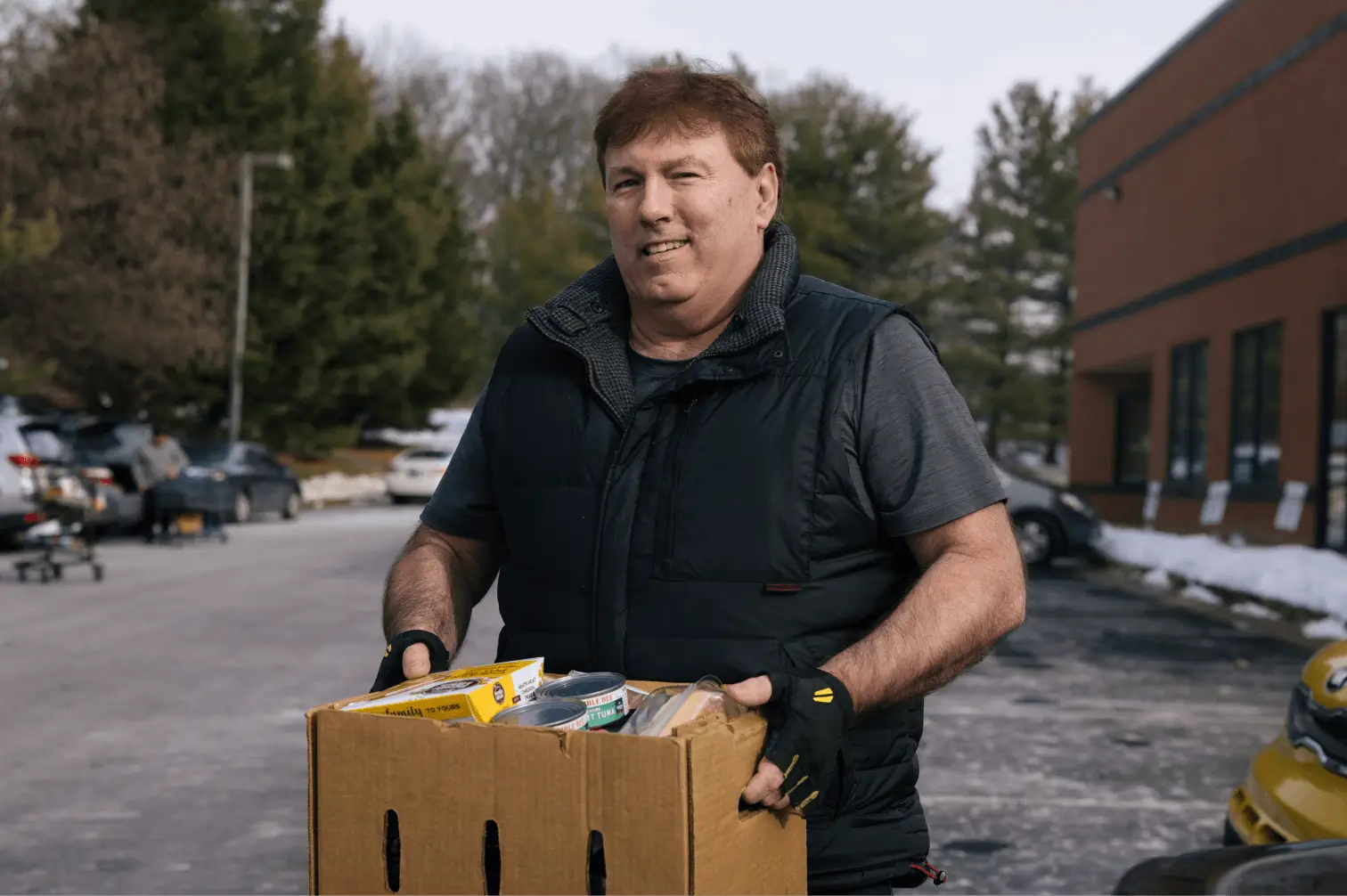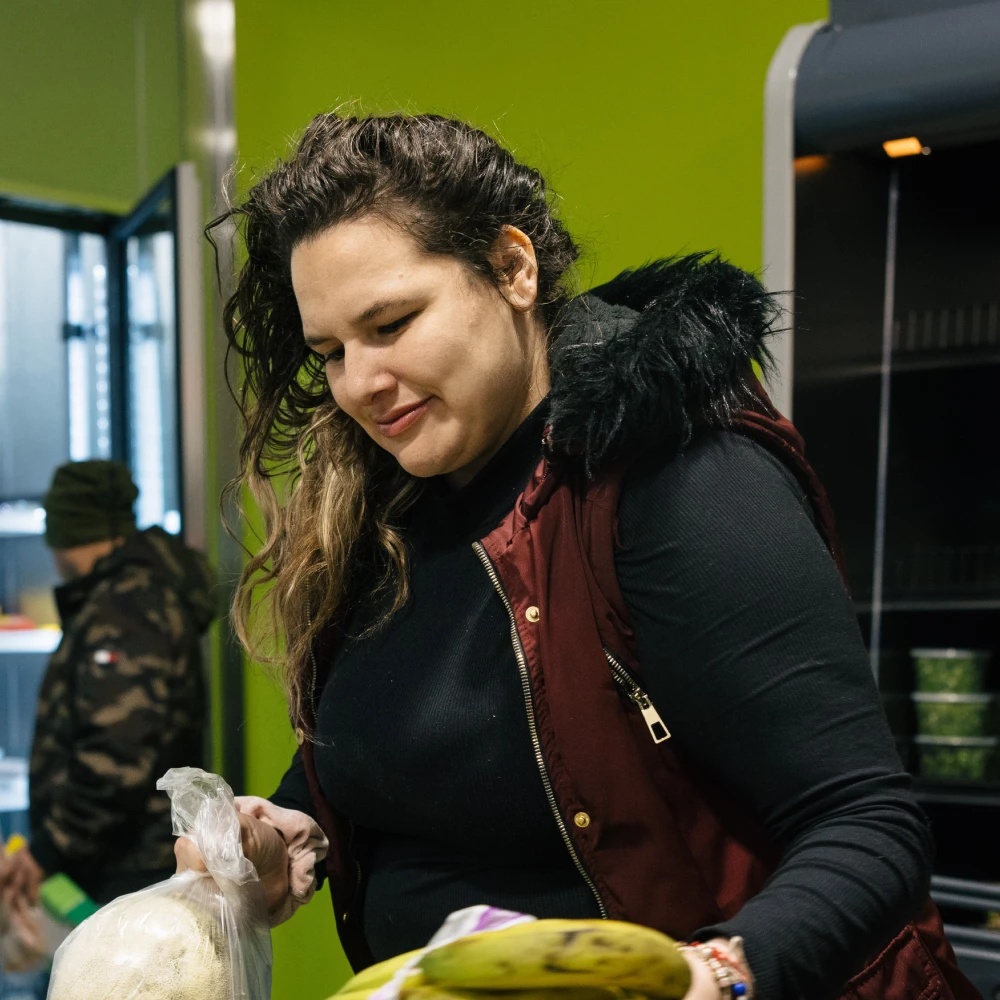The Blue Ridge Area Food Bank partners with nearly 400 community organizations throughout central and western Virginia to make it easy for everyone to access free, nutritious food. Our network of local food pantries and program sites is proud to serve anyone who asks for food, regardless of race, religion, immigration status or any other factors.
Food pantries
A variety of groceries are offered, typically including produce, meat, dairy, and shelf-stable items. You will be able to shop for your own groceries at some pantries.
Mobile Food Pantry (MFP)
A variety of groceries are offered, including fresh produce. Guests line up in cars and have food loaded into the trunk or backseat. Most MFP locations offer food through a senior program called the Commodity Supplemental Food Program (CSFP). See a site representative for an application if you are over 60 years of age. As a government program, there will be monthly income limits. CSFP provides shelf-stable items, vegetables, fruit, a protein (beef stew, tuna, chicken, chili, beans and/or peanut butter), juice, pasta or rice, cereal, milk, and cheese.
Soup kitchens and shelters
Prepared meals are provided.
Neighborhood Produce Market
Farmer’s market style distribution in neighborhoods with a focus on fresh fruits and vegetables.
Food Bank warehouses
We offer Emergency Food Boxes packed with shelf-stable food, and then we refer you to a pantry near your home or work.

